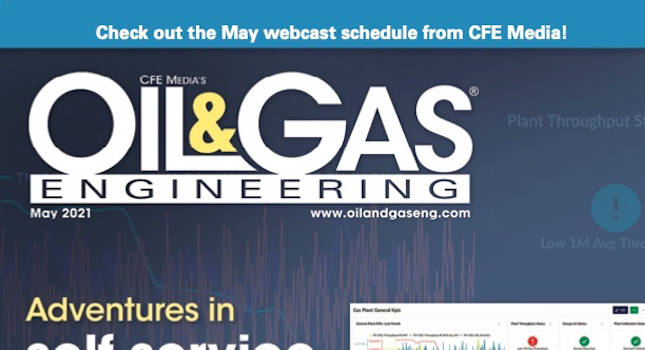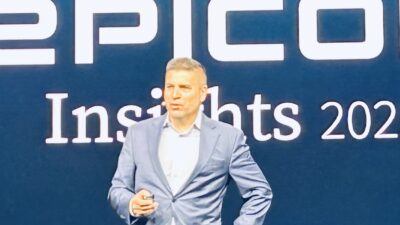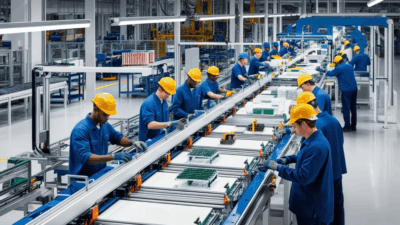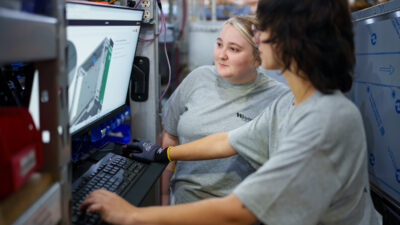Artificial intelligence (AI) and machine learning (ML) are moving into operations, in the oil & gas industry and beyond.

Signs seemingly abound that artificial intelligence (AI) and machine learning (ML) are moving beyond research and development and into operations, in the oil & gas industry and beyond.
Commercialization of AI/ML is challenged primarily by 1) the need to normalize and unify data drawn from dozens of sources and 2) the need to operationalize and scale applications.
Shell, C3AI, Baker Hughes, and Microsoft recently announced the Open AI Energy Initiative (OAI), an ecosystem of AI-based solutions for the energy and process industries. The OAI is a framework for interoperable solutions, including AI and physics-based models powered by the BHC3 AI Suite and Microsoft Azure.
Many IIoT and ML/AI based apps are aimed at attaining closed-loop maintenance functions and the OAI solutions provided by Shell and Baker Hughes are focused on reliability. The BHC3 AI Suite integrates enterprise data from disparate sources and trains AI reliability models while taking advantage of Azure, Microsoft’s cloud infrastructure.
The OAI augments BHC3 Applications with domain-specific solutions. The initial reliability solutions offered by Shell and Baker Hughes include proven equipment- and process-specific modules with pre-trained AI models, codified subject matter expertise, low-latency data connectors, thermodynamic and operating parameter libraries, global health monitoring services, diagnostics, failure prevention recommendations and prescriptive actions.
Lineup of leaders
C3AI, founded by the legendary Tom Siebel, has quickly become a high-profile provider of 1) a platform for developing and deploying large-scale AI applications, a portfolio of SaaS AI applications and C3 Ex Machina, a no-code AI solution to apply data science to everyday business problems.
Shell is making modules available through the OAI, including predictive maintenance for control valves, rotating equipment and subsea electrical submersible pumps. Baker Hughes will offer OAI interoperability with its System 1 condition monitoring software. The initiative will augment Baker Hughes and C3 AI Applications including for reliability and optimization.
“We are monitoring more than 5,200 pieces of equipment using machine learning across upstream and downstream manufacturing as well as integrated gas assets,” said Shell Chief Technology Officer Yuri Sebregts.
C3AI and Yokogawa Electric Corp. in April announced that Yokogawa has selected the C3AI Suite as a platform to enhance enterprise AI applications and complement its digital transformation solutions and services.
The multi-year agreement enables the company to deploy the C3 AI Suite with its advanced AI capabilities to their software portfolio.
5G on the horizon
Also in April, Yokogawa Electric signed an agreement with NTT DOCOMO, INC. to undertake a proof-of-concept test for remote control of a plant system using 5G, the cloud, AI and other technologies.
Yokogawa AI for plant control and a 5G module mounted on a three tank level control system will be used to remotely control the water level, thereby demonstrating the ease with which companies in chemical, oil, and other process industries will make use of autonomous control devices.
In a survey of process industries that Yokogawa conducted last year, 64% of respondents said they anticipated that plants would have fully autonomous operations by 2030. However, given communication latencies between the cloud and device controllers for conventional wireless communication, technology challenges remain.
The test hopes low latency will be achieved using DOCOMO’s high-speed, large-capacity, low-latency 5G communications network and meet other requirements of the 5G era, as well as other cloud technologies.
Yokogawa has already completed a trial of an autonomous control system based on its AI technology that successfully controlled the water level in a three tank level control system, a task that is generally acknowledged to be very difficult.



